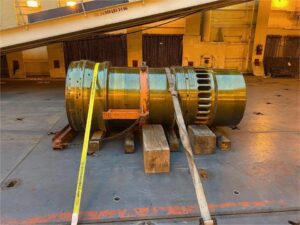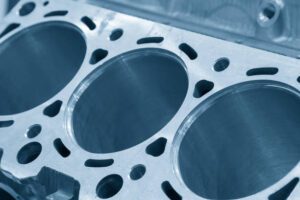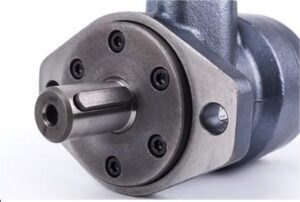Marine fall protection harnesses are essential safety equipment designed to protect individuals working in marine environments from falls and potential injuries. These harnesses feature sturdy straps and attachment points that secure the wearer in the event of a fall, distributing the forces across the body. With their durable construction and specialized design, marine fall protection harnesses provide peace of mind and ensure the safety of workers on boats, ships, oil rigs, and other marine structures. By wearing these harnesses, individuals can work confidently at heights while minimizing the risk of accidents and injuries.
What's The Type Of Marine Fall Protection Harnesses?
The two main types of marine fall protection harnesses are full body safety harness and safety harness belt.
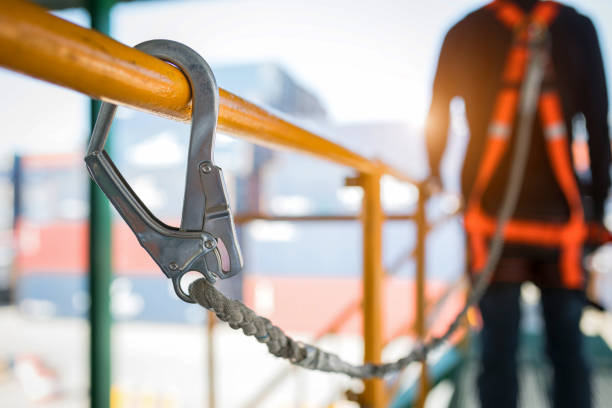
Marine Full Body Safety Harness
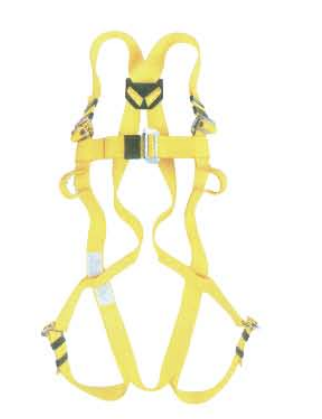
A full body safety harness is a comprehensive fall protection system designed to secure the wearer’s entire body. It consists of straps that wrap around the shoulders, chest, waist, and legs, providing coverage and support. Full body safety harness typically has multiple attachment points, such as dorsal (back), sternal (chest), and hip D-rings, for connecting lifelines, lanyards, or other fall arrest systems. These harnesses are designed to distribute the forces of a fall across the body, reducing the risk of injury. They offer a higher level of protection and are suitable for various marine activities where workers may be exposed to elevated work areas or potential fall hazards.
The Type Of Marine Full Body Harness
Commercial Marine Full-Body Harness: These harnesses are designed for general marine applications, such as shipbuilding, dock operations, or offshore maintenance. They typically feature multiple attachment points, adjustable straps, and are made with durable materials to withstand harsh marine conditions.
Offshore/Rescue Full-Body Harness: These harnesses are specifically designed for offshore or rescue operations, where the risk of falling into the water is high. They often include additional features like integrated flotation devices, reflective elements for visibility, and quick-release buckles for easy donning and doffing.
Sailing Safety Harness: Sailing safety harness is designed specifically for sailors and offshore racing teams. They provide fall protection while working on deck and often have attachment points for lifelines or tethers. Sailing safety harness may also feature high-visibility colors or reflective elements for enhanced safety.
Marine Safety Harness Belt
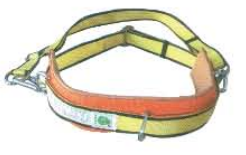
A safety harness belt, also known as a waist belt or safety belt, is a simpler fall protection option. It primarily focuses on securing the wearer’s waist area and provides attachment points for connecting lifelines or lanyards. This belt is typically lightweight and less restrictive than full body harness, allowing for greater freedom of movement. They are commonly used in situations where the risk of falling is lower or when limited mobility is required. Safety harness belts are suitable for marine environments where the fall hazards are minimal or well-controlled.
Is A Full Body Harness Better Than A Safety Harness Belt?
The choice between a marine full-body harness and a safety harness belt depends on various factors, including the specific work environment, tasks being performed, and the level of fall protection required. While both options provide fall protection, the effectiveness and suitability may differ based on the circumstances.
- Marine Full Body Harness: A marine full body harness is generally considered to offer better overall fall protection compared to a safety harness belt. Full body harnesses provide comprehensive coverage, securing the wearer’s shoulders, chest, waist, and legs. The multiple attachment points on full-body harnesses allow for the connection of lifelines, lanyards, or other fall arrest systems, distributing the forces of a fall across the body. These harnesses are ideal for situations with elevated work areas, potential fall hazards, or tasks that require extended periods of work at height. They provide a higher level of protection and are often recommended when there is a significant risk of falls or when compliance with specific safety regulations is required.
- Safety Harness Belt: A safety harness belt, on the other hand, is a simpler fall protection option that primarily focuses on securing the wearer’s waist area. This belts provide a basic level of fall protection and are typically used in situations where the risk of falling is lower or when limited mobility is required. They are often lighter and less restrictive, allowing for greater freedom of movement. Safety harness belts are suitable for marine environments where fall hazards are minimal or well-controlled, such as on smaller vessels, docks, or during specific maintenance tasks that do not involve prolonged work at height.
It’s important to consider the specific requirements and risks of the task at hand when selecting the appropriate fall protection equipment. Conducting a thorough risk assessment and following applicable safety regulations will help determine whether a marine full-body harness or a safety harness belt is the better choice for a particular work scenario. Ultimately, the priority should always be to ensure the safety and well-being of workers in any marine fall protection situation.
How To Choose Suitable Marine Fall Protection Harnesses?
When choosing a suitable fall protection harnesses for marine environments, consider the following factors:
Safety Standards and Regulations: Ensure that the fall protection harnesses meet applicable safety standards and regulations specific to the maritime industry, such as those set by organizations like the International Maritime Organization (IMO) or the Occupational Safety and Health Administration (OSHA).
Environment and Application: Consider the specific marine environment and application where the safety harnesses will be used. Assess the potential fall hazards, such as working at heights, near water, or in confined spaces, and choose a harness that is designed to address those specific risks.
Durability and Construction: Opt for a safety harnesses made from durable materials that can withstand the harsh marine conditions, including exposure to saltwater, UV radiation, and abrasion. Look for reinforced stitching, corrosion-resistant hardware, and high-quality materials that can endure the marine environment’s challenges.
Fit and Comfort: Ensure that the harness provides a proper and secure fit for the intended wearer. Look for adjustable straps, multiple sizing options, and ergonomic design features to enhance comfort during extended wear.
Attachment Points: Evaluate the harness’s attachment points and determine if they meet the specific needs of the marine application. Some safety harnesses may have multiple attachment points for flexibility in connecting to lifelines, lanyards, or other fall protection systems.
Certification and Testing: Check if the fall protection harnesses has undergone rigorous testing and certification by reputable organizations to validate its performance and reliability in real-world fall scenarios.
What Is The Standard Of Marine Fall Protection Harnesses?
There are several standards and regulations that govern fall protection harnesses used in the marine industry. Some of the key standards include:
ISO 12401: This International Organization for Standardization (ISO) standard specifies requirements for personal protective equipment (PPE) used in fall arrest systems for maritime applications, including harnesses, safety lines, and associated equipment.
EN ISO 12401: This European standard is the equivalent of ISO 12401 and provides the same requirements for fall arrest systems used in maritime environments.
ANSI/ASSE Z359.11: This American National Standards Institute (ANSI) standard establishes requirements for safety requirements of full-body harnesses used in fall arrest systems, including those used in marine applications.
OSHA 29 CFR 1915: The Occupational Safety and Health Administration (OSHA) regulates workplace safety in the United States. OSHA’s standard for shipyard employment, 29 CFR 1915, includes requirements for fall protection, including the use of appropriate harnesses.
Choose The Best Marine Safety Harnesses At GOSEA MARINE
At GOSEA MARINE, we supply various kinds of high-quality marine safety harnesses to satisfy different marine application demand.As the excellent marine equipment supplier and producer, we have the most professional group to answer all your question about marine fall protection harnesses.Contact us now to get the lowest price and the best product.

